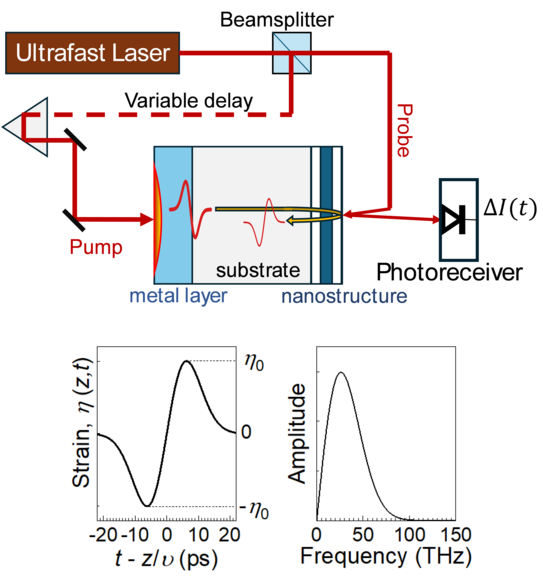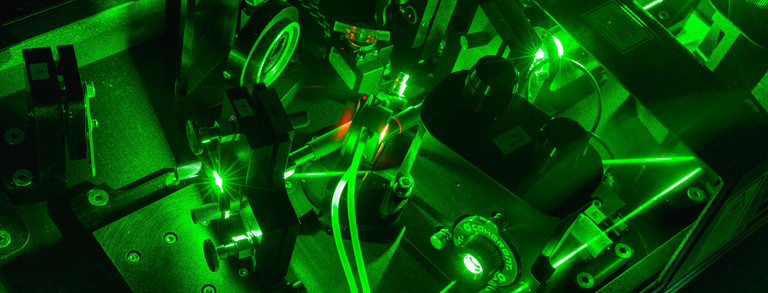Ultrafast acoustic experiment
The excitation of hypersound acoustic waves is based on the optical generation of lattice stress in a shallow near-surface region of the studied structure.
Controlling coherent acoustic excitation is realized by adjusting the structural design and excitation regime. We employ:
- phononic Bragg mirrors and acoustic waveguides,
- periodic surface patterning with nanometer resolution,
- free-standing layers with thicknesses down to monoatomic,
- elastic nonlinearity and nonlinear phonon dispersion.
Combining these tools, we can control the main parameters of the coherent lattice response to the optical excitation: form a sub-picosecond pulse (acoustic soliton) guided on a 100-µm distance to monochromatic vibrations with lifetimes of tens of nanoseconds localized in the optically excited volume.
Detection exploits the photoelastic effect, i.e., modulation of permittivity by strain and the interaction of acoustic waves with other excitations in solids accompanied by dynamical optical effects such as modulation of reflectivity, light emission, or transient magneto-optical Kerr rotation.




